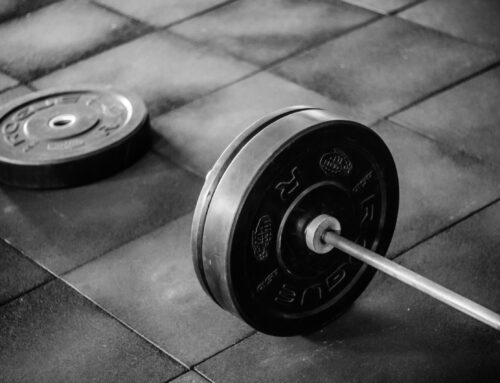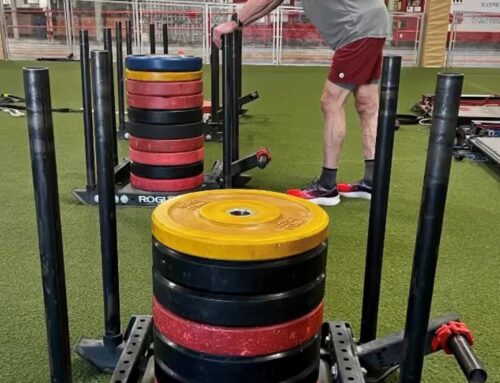I love quizzing anyone I’m training or coaching on an assortment of trivia. My favorite question (after “What state borders the most other states?”) is, “Can you tell me what your core is?”
The response usually isn’t spoken; the person instead takes their hands and runs them down the front of their body, from below their chest to their waist. My response is usually something like, “You’re 1/6 right. Now let me help you with the other 5/6.”
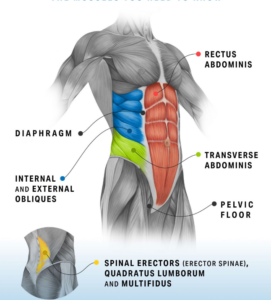 Your core is made up of a series of muscles that ensure the stabilization of your torso. I think of the core in two areas: one is the four intrinsic core stabilizers that create a cylinder around the spine. These muscles are the pelvic floor (bottom), diaphragm (top), multifidus (back), and transverse abdominis (lower abs seat belt). This cylinder plays a crucial role in protecting your spine and aiding with posture. These four distinct muscles, also known as the Intrinsic Stabilization Subsystem, are responsible for creating intra-abdominal pressure and spinal stiffness; this is crucial for any movement, but it is especially important for running, jumping, and bracing.
Your core is made up of a series of muscles that ensure the stabilization of your torso. I think of the core in two areas: one is the four intrinsic core stabilizers that create a cylinder around the spine. These muscles are the pelvic floor (bottom), diaphragm (top), multifidus (back), and transverse abdominis (lower abs seat belt). This cylinder plays a crucial role in protecting your spine and aiding with posture. These four distinct muscles, also known as the Intrinsic Stabilization Subsystem, are responsible for creating intra-abdominal pressure and spinal stiffness; this is crucial for any movement, but it is especially important for running, jumping, and bracing.
The aforementioned core muscles aren’t visible, but the rectus abdominis (six pack), obliques (sides), and erectors (back) are – and they traditionally garner all the attention since they “show.” Let’s take a closer look at these important muscle groups.
Every exercise will work the core in some fashion – some indirectly and some directly. Below, I’m going to cover bodyweight exercises, weight-bearing exercises, and specialty exercises using tools of the trade. I’m also going to review mental cueing, which is just as important – that is, what you should be thinking about or telling yourself during the movements.
Here are four of my favorite core stiffing exercises (and be sure to check out Part Two for six others):


Dead-Bug
Start by lying on your back with both feet off the ground and your legs at ninety degrees. Your arms should be extended straight into the air with your palms facing each other. Extend your right arm straight back towards the ground while extending your left leg forward. This takes concentration as all the extremities will want to move. Move slowly and in a controlled manner. Get the movement in the leg and arm as long and straight as possible while keeping firmness in the lower back. Think about a scissoring effect as the leg and arm move to the starting position.
Protocol – 4 sets of 5 reps on each side, slow and controlled.
Key Phrase – “Wring out the core.”
Key Muscles – Erectors and the Obliques.
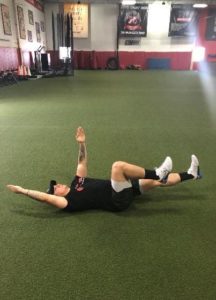
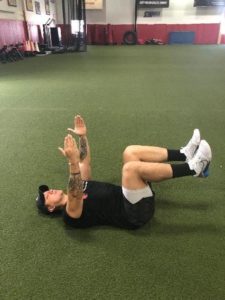
Bird Dog
Start on your hands and knees. Extend your right arm forward, keeping it completely straight and parallel to the ground. Simultaneously do the same thing with your left leg. Do that position for 10 seconds, then return to the start position. Think about extending your body as if someone grabbed your ankle and wrist and pulled on them.
Protocol – 3 sets of 5 reps on each side, 10-second hold.
Key Phrase – “Get long, reach with your hands and feet.”
Key Muscles – Erectors, rectus abdominis, transverse abdominis, and multifidus.
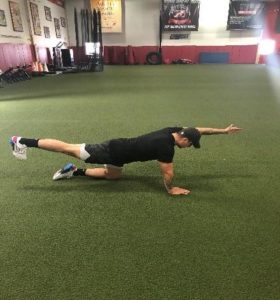
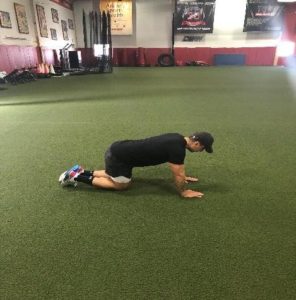
45-Degree Back Raise
Start with your heels slightly elevated off the toe plate and your knees locked out. Bend at the waist. Once your body gets to 90 degrees, hold that position for a second, then return to the starting position. Think about applying force through the balls of your feet.
Protocol – 4 sets of 8 reps, pause at the top for a 1 count.
Key Phrase – “Shoulder to hip to knee to ankle in one straight line.”
Key Muscles – Erectors.
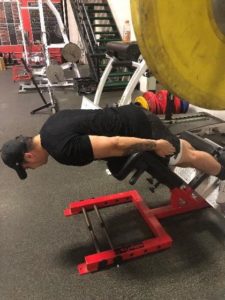
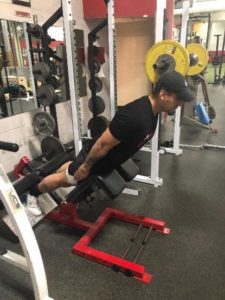
Power Plate Side Plank
This is the standard front and side plank with a twist – or, should I say, with vibration. The power plate’s vibrations cause your core muscles to contract 30 to 50 times a second, which is a substantial increase over the one to two contractions the body usually makes; add this to the instability and it’s a plank on hyperdrive. Start on your right arm for 30 seconds, then rotate to the front for 30 seconds, and then finish on your left. Think about keeping your hips up.
Protocol – 3 sets of 1:30 minutes: 30 seconds left side, 30 seconds forward, and 30 seconds on the right. The settings should be High/30.
Key Phrase – “Brace yourself.”
Key Muscles – Rectus abdominis, transverse abdominus, and obliques.
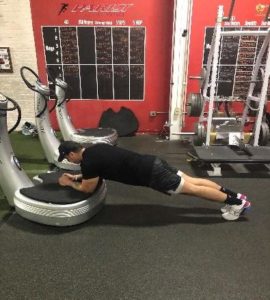
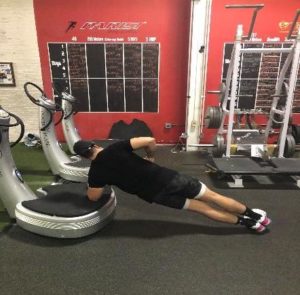
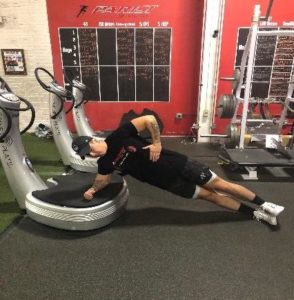
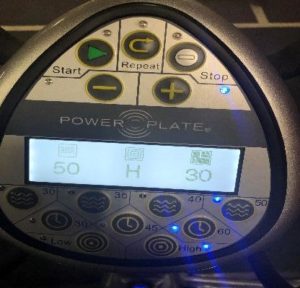
Be sure to check out Part Two for more valuable core exercises – coming next Tuesday.


